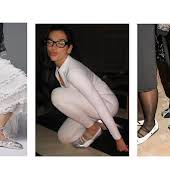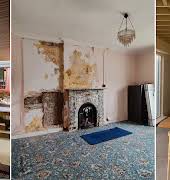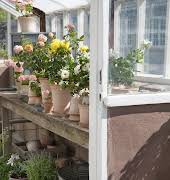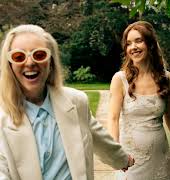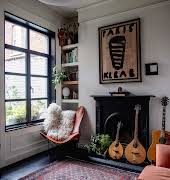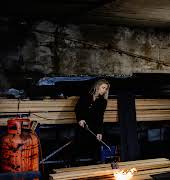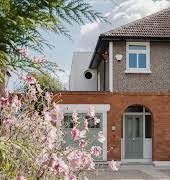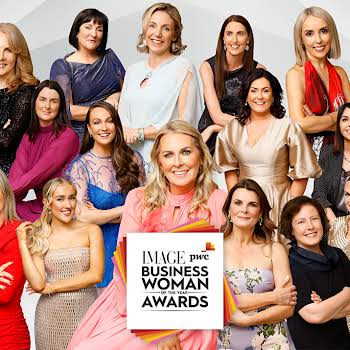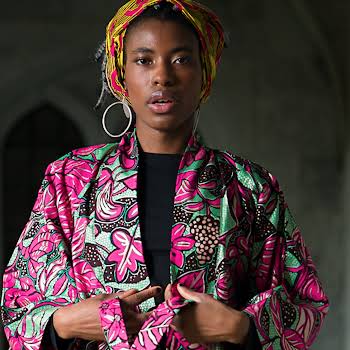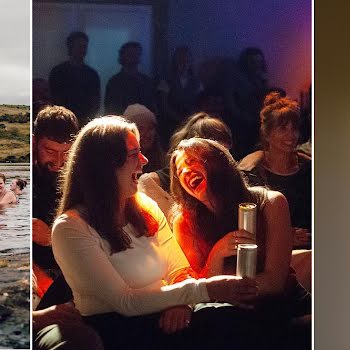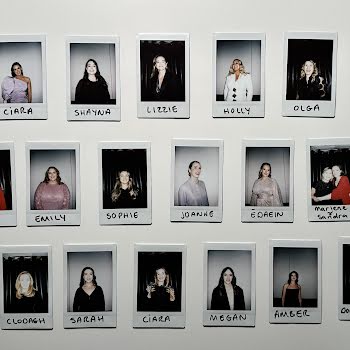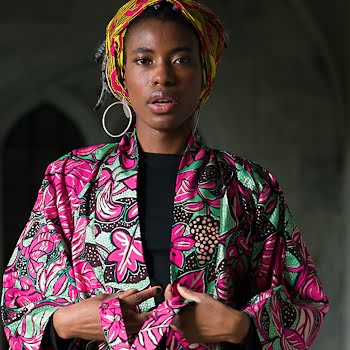Sponsored
My Start-Up Story: One architect’s journey to independence
Sponsored By

By Sarah Finnan
16th Dec 2024
16th Dec 2024
Sponsored By

Architecture is about much more than just creating buildings. For IMAGE Business Club member Orla Wilson, it’s about shaping the spaces in which people live and work – a role she feels very privileged to do. Fuelled by a passion for design, she set up her own business in 2021. Giving her greater design oversight and allowing her the flexibility she needed for her family life, it’s been her best decision to date. Here she tells her Start-Up Story.
Passion for design
Design has always been my passion. Ever since I was 10 years old watching Changing Rooms on BBC, I’ve wanted to design and create the rooms and buildings in which we live our lives.
I grew up in Dublin, the youngest of four kids. My dad was a civil engineer who spent his time researching the latest developments in the construction industry. My mum was very creative, always trying new recipes, baking and knitting or sewing clothes for us. I think the combination of my parents’ interests is what directed me towards architecture – a job where I could design and construct various ideas in my head!

Advertisement
I studied architecture at UCD. During my fourth year, I was fortunate enough to be offered a 12-month internship to work for a Danish company (Cowi LLC) in Muscat, Oman. It was one of the greatest experiences of my life. The Omani people are so welcoming and friendly and I got to work on a wide range of projects – from villas to shopping centres. I also met my now husband there!
After a year in Oman, I returned home to finish the final two years of my degree. I graduated in 2011 while Ireland was in the midst of the recession, so in conjunction with a number of my classmates I moved to London in search of a job. I spent five exciting years there – the highlight of which was refurbishing listed buildings in Covent Garden, in the heart of the city. The projects were challenging but I got to work with an incredible team and the buzz of being so centrally located made the daily stresses worthwhile!
By 2016, I was beginning to tire of the hecticness of London life and I wanted to be closer to my family so we moved back to Dublin. I got a job designing office fit-outs which I hadn’t done before but I really enjoyed getting to understand companies, their values and the different ways in which this could be manifested in the space they worked in. I began to build up relationships with clients and as they expanded and grew their companies, they would return to me to design their new spaces.
However, as I progressed in my career, I began to realise that climbing the ladder meant you became more of a manager and less of a designer. The role of senior architects in large firms is typically to oversee and manage the design of projects by teams of younger designers. I felt like I was missing out on the enjoyment of getting into the nitty-gritty details of a design. I set up my own company, Eaton Wood Architects in 2021, using the skills and experience I had garnered over the past decade to work on projects where I would be fully involved in every aspect of a client’s design. As a lean and agile architectural practice, our senior staff members can be hands-on at all stages of the design process. This inevitably means that we are more selective about the projects that we take on.
As an entrepreneur, it’s essential to nourish and grow your network as you never know where the next big job may come from!
Going it alone
We bootstrapped the company from the start. Fortunately, being a services-based business, means that my setup costs were relatively low – my time is my most significant asset. A significant portion of my work is based on referrals, so I used my existing network of consultants and contractors to generate leads. As an entrepreneur, it’s essential to nourish and grow your network as you never know where the next big job may come from!
Our mission is to create spaces that spark joy – whether that’s in commercial or residential settings. We achieve that by focusing on three key elements of design; functionality, aesthetics and sustainability. When the spaces we live and work in are designed considerately, it can have a significant positive impact on our physical and mental well-being. Being able to improve the day-to-day lived experiences of our clients is a privilege we value highly.

Advertisement
Adaptability was another motivating factor in why I set up my own business. As a mum of two energetic little girls, I realised that I needed more flexibility in my schedule than I could find working for other companies. I wanted to be able to spend more time with my children and collect them if school called unexpectedly without feeling guilty or panicking about having to make that time up later. I knew that working for myself wouldn’t mean fewer hours, but it would mean that I could at least pick my own hours and wouldn’t have to choose between my employer and my children.
I was advised that setting up a company and being a mum to two young kids would be too much for me and I would be better off waiting until they were older. That advice was given with my best interests at heart but I have never been happier than I am now, working for myself. The joy I get when a planning permission is approved or a client loves one of my designs is amazing – the joy I get from being able to spend more time with my daughters is priceless. There are definitely a lot of balls in the air at any one time and I would never describe it as easy, but every day my juggling skills are improving!
Intersection of architecture and AI
We don’t necessarily have an architectural style. Sometimes architecture companies stick to a certain type of aesthetic that all of their work fits into, but at Eaton Wood Architects, we prefer to listen and work closely with our clients to design spaces that reflect their style and aesthetic. Ultimately, that’s what will make someone truly love the space they’re in – when they feel that it has their own stamp on it. Sustainability has been one of the biggest influences on how we think about design and construction in Ireland over the past 10 years. Due to the increase in government grants and knowledge regarding sustainability and energy efficiency, there is now a huge push towards improving our existing built environment and building more energy-efficient buildings. Our connection to nature is becoming more important to clients. There’s now scientific research supporting the benefits of biophilic design and indoor/outdoor living is often central to what most homeowners’ want.
Technology has also changed how we design and construct buildings. The developments in technology over the past 50 years – particularly regarding construction – are on a whole new level. We’ve come a long way since the early 70s when electronic calculators were first introduced on construction sites to now, where architects are designing and modelling buildings in 3D on computers. Clients can walk around their building in virtual reality before a shovel has even hit the ground! Experience has taught me that the majority of people find it very hard to read a two-dimensional plan and while 3D sketches can help give an idea of space, virtual reality has been a real game-changer when it comes to clients really understanding exactly how a space will look and feel when constructed.

Typically, I’ll provide my clients with two different options for their extension. They may be drawn to one drawing more than the other but they’re often unsure which way to go. Once they put the virtual reality headset on and walk around the 3D model of both options, they immediately know which one suits their needs better. Not only can clients make decisions faster, but this also means that fewer changes happen on-site as clients fully understand the design which reduces costly changes and delays. I’m currently researching augmented reality so I can show my clients how the extension will look within the real-world surroundings of their homes.
Advertisement
The impact of AI on the construction industry will be huge, but a lot of that is still unknown. Personally, I think the construction industry can be slow to adopt new technologies. There is so much scope for improvement and advancement but we need to take a more proactive role in helping things along. Looking ahead to next year and beyond, there will be significant focus on the measures people can take to make their homes more energy-efficient to mitigate the effects of rising energy costs. People are also looking to their gardens more to see if they can accommodate something that could work as a home office.
The pandemic has radically changed how we design workspaces. Hybrid working has become the norm which has increased the need for space within the home or garden for an office. Employee wellness and satisfaction have also become centre stage in office design. Employers now need offices designed to attract potential employees and encourage existing employees to come into the main office space.
Entrepreneurial resources
From my experience, the Irish education system doesn’t support entrepreneurship. Neither my school studies nor my university degree prepared me for setting up my own business and I really felt like I was starting from scratch but I used the expertise I gained from working for other architectural practices to help me and tried to implement those learnings in my own company. Naturally, going out on my own was daunting but there are so many supports available to new entrepreneurs.

Before starting out, I did the Start Your Own Business programme with my Local Enterprise Office (LEO). It covered various aspects of business from different business structures to marketing to taxation and was an invaluable asset on my business journey. I’ve since completed the online marketing course and I partake in the mentoring service provided too. I’m also a member of the Dún Laoghaire-Rathdown LEO women’s network which provides great networking opportunities. Entrepreneurs need spaces to come together. It can be a lonely life at the start when you set out on this journey, and clubs like the IMAGE Business Club enable you to meet like-minded people who are facing a lot of the same challenges you are going through. Together you support each other and buoy each other when rough patches hit.
Advertisement
If the government further reduced the cost of childcare, there would be more women in the workforce who would be paying taxes and contributing to the economy. It's a no-brainer to me.
Diversity and inclusion
In my opinion, the construction industry as a sector could be and should be more diverse and inclusive. Diversity and inclusivity are improving but not fast enough. There’s still an 11% pay gap between male and female architects which is not acceptable (RIAI Architects Salary Survey 2023). There are prominent female-led firms such as Grafton Architects that are championing women in architecture but, for the most part, the majority of larger architectural practices have boards which lack diversity. With only 44% of companies providing paid maternity leave, the sector is not supporting women to stay in the workforce and progress in their careers. To provide a built environment that meets the needs of all people across the board, then it is essential that the sector becomes more diverse and inclusive to all.
I think the reduction in the cost of childcare over the last couple of years is a step forward however, childcare costs are prohibitive to a significant number of women who wish to return to work – especially for women in sectors such as teaching, nursing or care, and ironically these are the sectors where our economy needs to increase employment levels. If the government further reduced the cost of childcare, there would be more women in the workforce who would be paying taxes and contributing to the economy. It’s a no-brainer to me.
One woman in business I greatly admire is jewellery designer Chupi Sweetman. She’s such a strong female role model, succeeding in a male-dominated industry. She’s taken what I would describe as a “faceless” industry and become the face of diamond jewellery in Ireland. Over the past decade, her company has grown and changed in line with her values. She also champions Irish design and production when she could easily manufacture her products elsewhere for a lower cost. I particularly admire how she continues to evolve and move forward with her brand and I can’t wait to see what she does next!
Advertisement

Imposter syndrome
Imposter Syndrome is something I have definitely experienced. The fact that most of my clients come through referrals should be a clear sign that they trust and value my expertise. However, at the same time, relying on referrals can feel outside of my control, which can sometimes fuels those moments of self-doubt. I try to focus on my two reasons for setting up the company to help combat this. If I am still getting to be involved in the design process, have the flexibility to be with my children and manage to make some money, then I’m achieving my goals! Sometimes ego tries to get in the way of that but I firmly believe in the mantra “What’s for you, won’t pass you by.” When I am unsuccessful on a bid for a project, that saying reassures me that there is something better just around the corner. It’s always turned out to be true so far!
I’ve been in business three years now but there’s still so much I want to achieve in the next 10. I would love to see the company as the premium brand of architecture in Ireland, working with great clients who understand the architect’s role in the design process. I plan on hiring a team of designers but I want to keep the company small-scale so that I have input in all the design work we produce. The construction process can often be stressful and difficult for clients – I want to eliminate that stress and be a safe pair of hands guiding them through the process until they are in the house/office of their dreams.
My favourite thing about working for myself is not having to answer to anyone else. I love having full autonomy over decisions relating to the business. My least favourite thing is also having full autonomy over every business decision! When I make the wrong decision, the fault lies entirely at my door, but I do try to look at mistakes as learnings rather than failures.
If you’re thinking about starting your own business, I’d advise you to really take time to understand why you want to go down that path. It can be a tough – and sometimes lonely – journey with lots of highs and lows. Stepping back and remembering your why during the low parts can really help you stay focused. It will also stop you from getting distracted by different “shiny” diversions that may come along as you progress.
Work-life balance
My dad always told me when I was growing up, “It doesn’t matter if you don’t know how to do something, you just need to know how to find someone who knows how to do it who will help you.” He is a firm believer in surrounding yourself with people who are smarter than you and have different skill sets than you. I am more than happy to delegate tasks like accounting and marketing to the professionals but I do find it hard to delegate design tasks. Maintaining full control over everything isn’t always possible or sustainable. It comes down to having faith in the people I have around me and trusting that they know what they are doing.
Advertisement
I am not sure if a constant work-life balance is ever attainable, but I think having the right mindset can really help. I just finished reading Mindset by Carol Dweck and it has fundamentally changed how I think about all aspects of my life. If you believe that a work-life balance is within your control, then it can be achievable. Since starting my own business, I have found it incredibly hard to switch off at the weekends or in the evenings but I’ve come to realise that this is essentially a choice that I am making. If I am more conscious about actually switching off outside of work hours, then I can achieve, or at least get closer to achieving, the ever-elusive work-life balance.
Looking after my health is another thing that supports that. When I was working for previous companies, I would prioritise getting the project done above all else – even with the knowledge that I had a large support team around me that could step in if needed. Pretty soon after setting up my own business, I realised that working all hours and burning out would not help the company… in fact, it would bankrupt the company! So I started prioritising my health on the understanding that I could only do my best work when I am physically and mentally well. I try to exercise every day, even if it’s just going out for a walk and I look after myself by eating nutritious food.
You can find Orla and online at eatonwoodarchitects.com and on Instagram.

